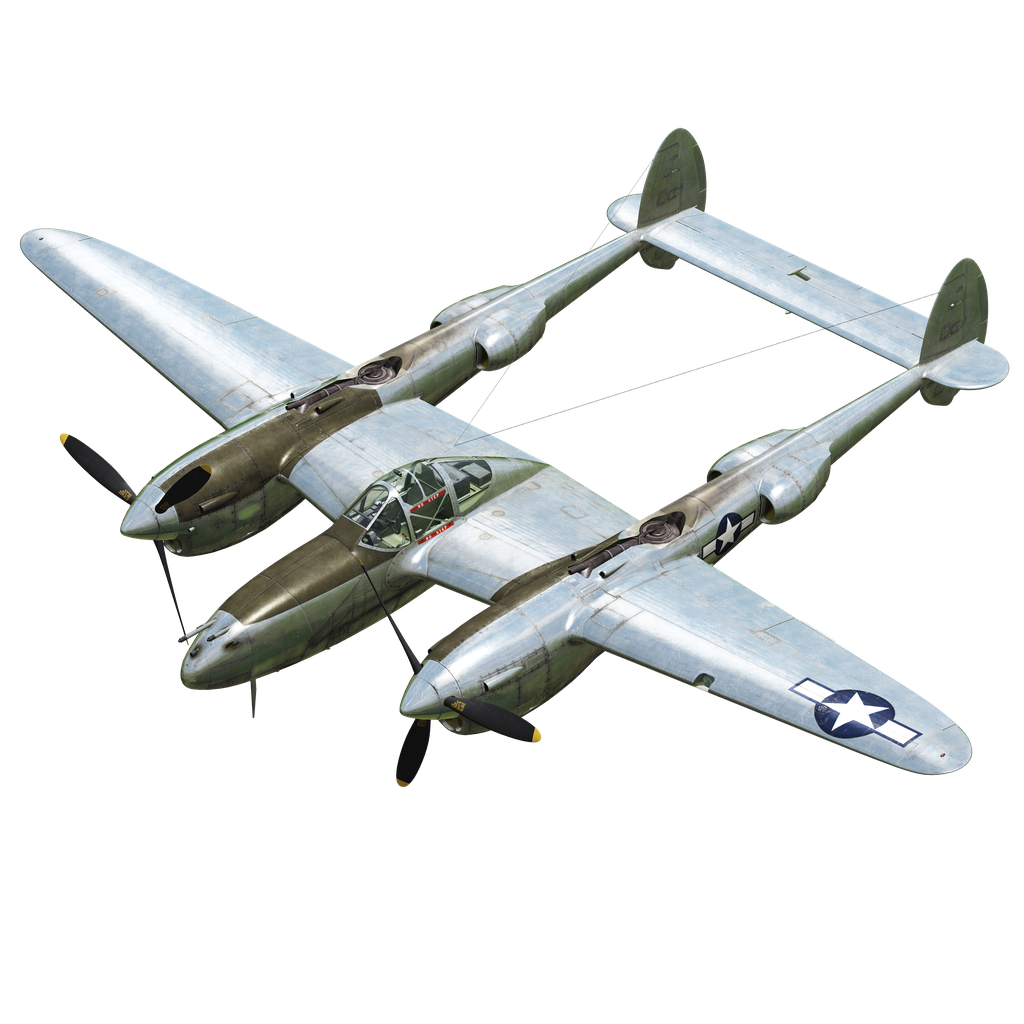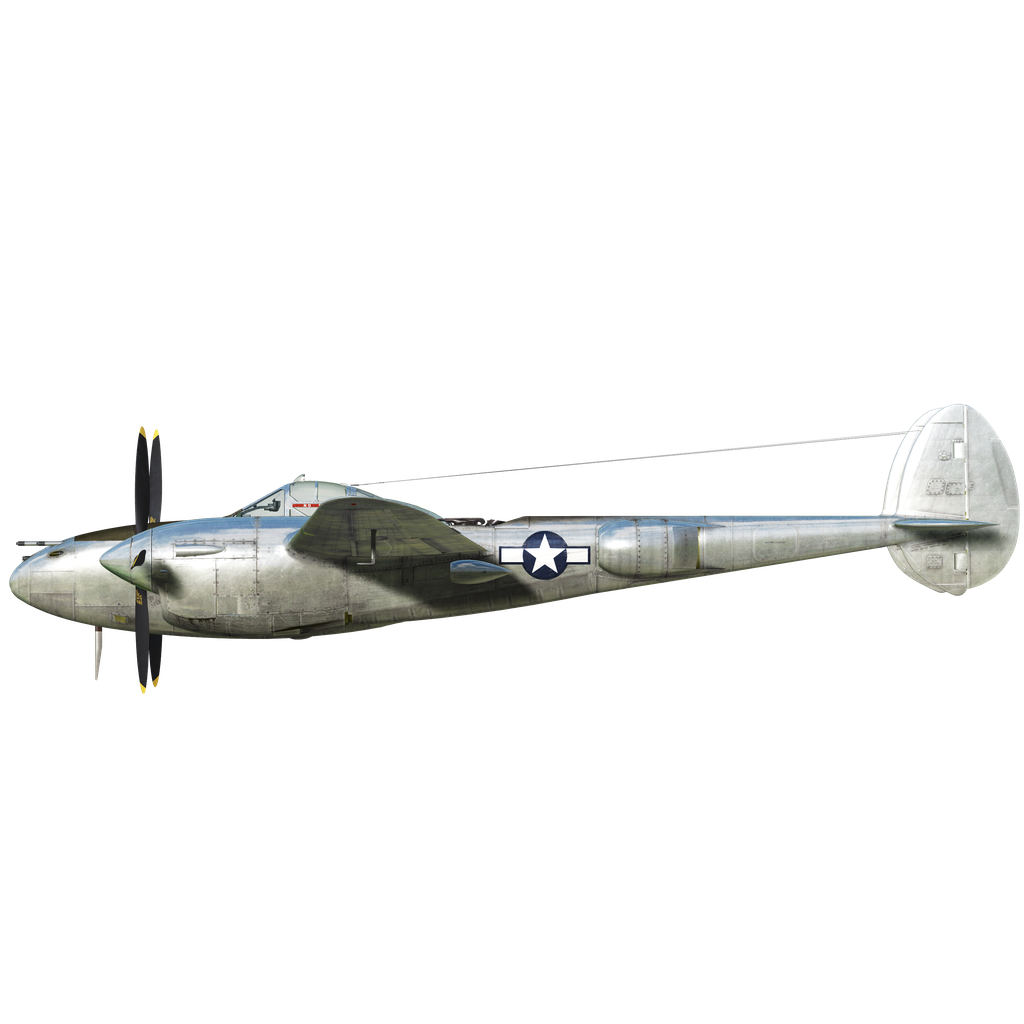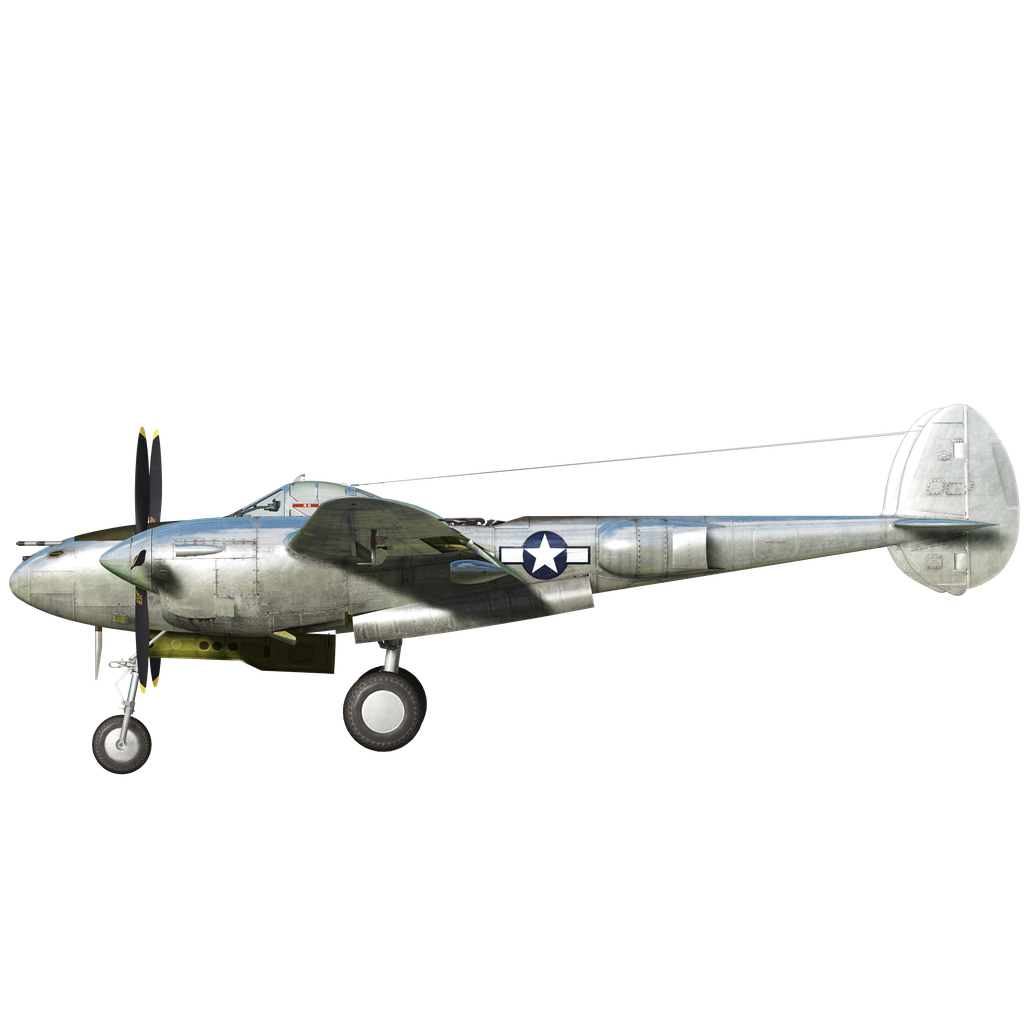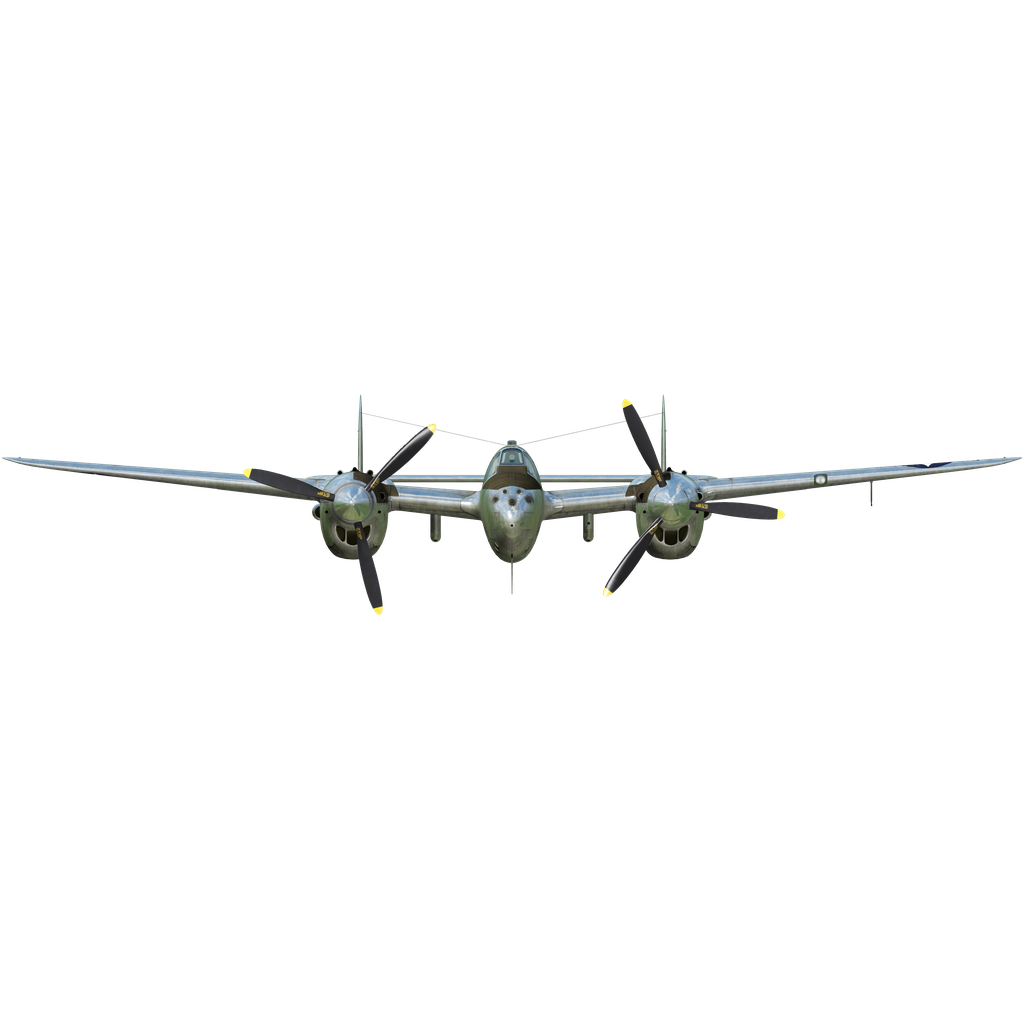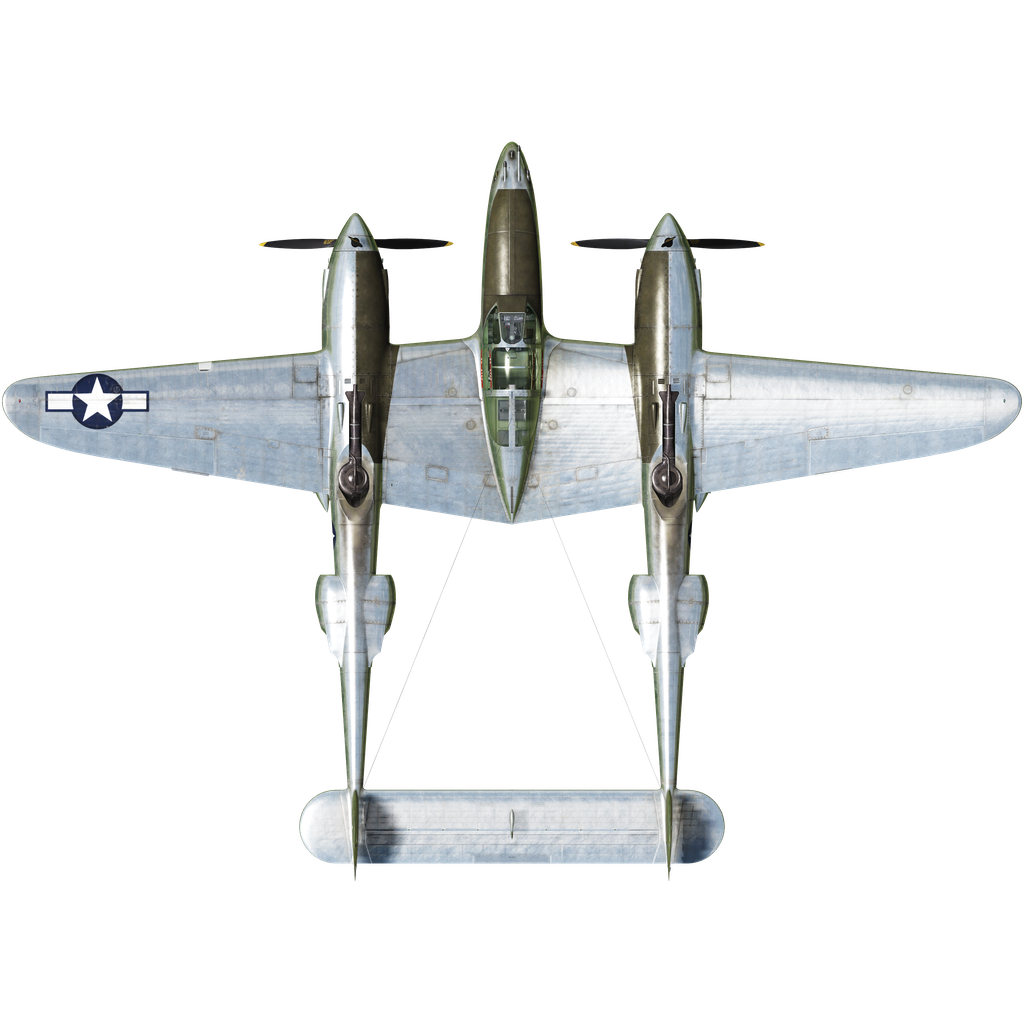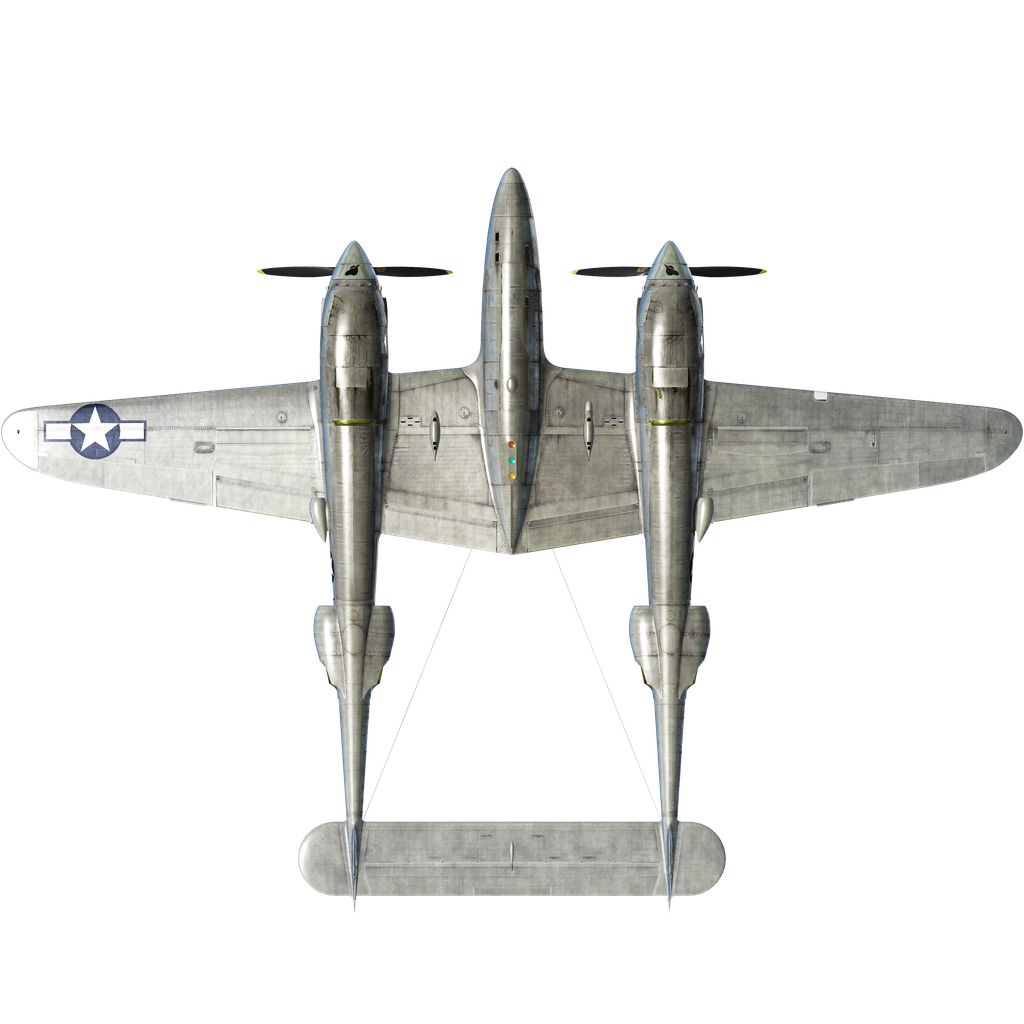In 1937, the U.S. Army Air Corps announced a competition for a twin-engine high-altitude fighter-interceptor, which was won by Lockheed with a very original design of a twin-boom aircraft. The prototype took to the skies on January 27, 1939, and in 1941 the first P-38D fighters entered service (at that time in the United States, the first combat-ready aircraft models were immediately assigned the index D), which in England received the name "Lightning." The plane has become an icon in many ways:
-
It was Lockheed's first production fighter;
-
The first twin-engine interceptor to enter U.S. service;
-
The world's first fighter with a nose landing gear;
-
The first in the U.S. to use countersunk rivets to join the skin;
-
It was the first to have a teardrop-shaped all-around canopy;
-
It was the first American fighter to shoot down a German plane in World War II;
-
The first American fighter to reach Berlin;
-
The first Allied aircraft to land on Japanese territory after the surrender.
Being the first in many ways, the aircraft could not help but have shortcomings, but as combat and operational experience accumulated, all were eliminated and in mid-1943 the P-38J modification went into production. It was produced in several modifications, the most advanced of which was the P-38J-25.
The P-38J-25 Lightning was a single-seat, twin-engine, all-metal monoplane with a three-post landing gear. The wing consisted of a center section and two removable sections. The central section carried self-sealing fuel tanks and a central nacelle. In the front part of the nacelle, there was a weapons compartment and a recess for the front landing gear, and in the rear, there was a pilot's cockpit with a drop-shaped transparent canopy. The cockpit armor consisted of a set of armor plates that covered the pilot in front and behind. The tail booms were composed of three compartments. The front compartment of each of them was made integral with the middle section and served to install the engine. A turbocharged compressor unit was located in the upper rear part of the compartment. Radiators for the engine cooling system were mounted in the center sections of the tail booms. The design of the cooling system was changed on the P-38J and new air intakes for the cooling radiators were installed with a more advanced aerodynamic shape. The rear compartments were used to mount the tail. Starting with the P-38J-15, the place of the intercoolers in front of the wing consoles was taken by additional fuel tanks with a total capacity of 416 liters, but they were not installed on all P-38Js: aircraft with additional tanks were marked with a red cross on the fuselage next to the manufacturer's plate.
Earlier models suffered from loss of control during high-speed dives, so the P-38J was equipped with special flaps that allowed it to recover quickly and safely from a dive. Aileron boosters made the P-38J-25 one of the most maneuverable fighters in the world.
The propulsion system consisted of two liquid-cooled Allison V-1710-89/91 engines, each developing 1425 hp up to an altitude of 7200 m. To compensate for the torque of the two engines, their shafts rotated in different directions, hence the different designations for the left and right modifications.
The small arms consisted of a 20 mm cannon and four heavy machine guns. The location of all weapons in the nose of the aircraft, without the need to synchronize with the propeller, made it possible to achieve high salvo power and shooting accuracy. Bombs or drop tanks could be carried under the center section.
P-38 fighters were widely used by the U.S. Army Air Forces during World War II, especially in the Pacific theater. It is worth noting that it was the P-38 Lightning that was flown by the two most successful fighter pilots in the history of American military aviation — Thomas McGuire (38 victories) and Richard Ira Bong (40 victories). The P-38 was also used for a variety of other missions, including dive and level bombing, night missions, and photographic reconnaissance. In Europe, the Lightning was less popular and was used primarily for attack missions.
Interestingly, this was the only fighter produced from the attack on Pearl Harbor to the end of the war. A total of 2,970 P-38Js were built.
Used sources:
1. Francillon “Lockheed aircraft since 1913” -1987
2. “American Warplanes of World War II” by David Donald, 1995
3. S. Ivanov “R-38 Lightning Photo Archive” War in the Air No. 103 2004
4. Materials from the site airwar.ru
